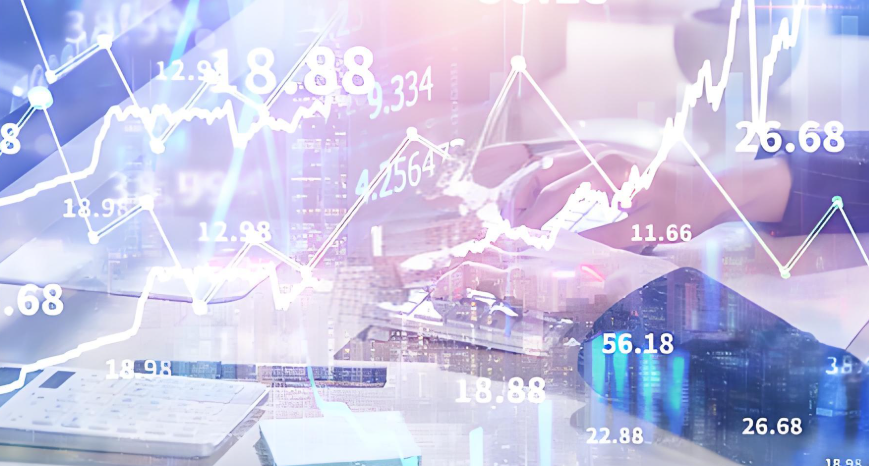The Impact of Gold on Market Capital Flow Trends
Advertisements
In the intricate tapestry of the global economic landscape,gold has consistently emerged as a cornerstone of financial security.Throughout history,this precious metal has held an esteemed position as a hedge against inflation and an asset that retains value during tumultuous times.Analyzing the cyclical patterns of gold prices uncovers a wealth of opportunities for astute investors who can navigate the unpredictable waters of financial markets.The dynamics at play during periods of rising gold prices reveal not just economic realities,but also the psychological behaviors of investors.
The primary catalysts that trigger the ascent of gold prices are far-reaching and multifaceted.Global uncertainties frequently propel funds toward gold,particularly amidst geopolitical crises or when the strength of the US dollar begins to wane.A notable trend accompanies these rising cycles: as fear permeates the market,the demand for safe-haven assets like gold experiences a swift and dramatic surge.For instance,during the COVID-19 pandemic in 2020,fearing economic recession prompted a significant inflow of capital into gold,resulting in a new historical price peak.Such patterns indicate that in periods of economic volatility,the trend often defies expectations,with funds flowing toward gold as market risks escalate.
The heartbeat of market movements during these times can primarily be attributed to a handful of core drivers.As volatility amplifies,we often witness a stark increase in the demand for safe-haven investments.Investors tend to retreat from risk-laden assets such as stocks and bonds,redirecting their capital toward the gold market,which promises relative security.This trend becomes particularly pronounced during episodes of financial crises or unexpected geopolitical conflicts,reflecting a collective instinct to mitigate risk.
Another crucial element that influences the flow of investments towards gold is the policies adopted by central banks around the world.For example,when the Federal Reserve embarks on a path of monetary easing,it can lead to a depreciation of the dollar,prompting a concurrent rise in gold prices.Conversely,when the dollar regains strength,the gold market may experience short-term pressures.The decisions made by central banks ripple through the financial ecosystem,affecting investors’ perspectives and adjustments in their strategies.
Moreover,the role of institutional investors cannot be overstated in this globalized financial environment.As participants in gold ETFs have grown,so too has the drive for capital flows into gold-related investments.A surge in interest from institutional players can significantly impact the scale of these investment vehicles,further driving up gold pricing as demand amplifies.
Understanding the distribution of capital flow during cycles of rising gold prices reveals a pattern of several primary directions.For starters,there is typically a notable increase in demand within the physical market,particularly in jewelry and industrial applications,providing a foundational support for gold pricing.In addition,the activity in the futures and derivatives markets often surges,as investors leverage tools such as options and futures to hedge against risks or to capture excess returns.Simultaneously,the rise of personal savings in the form of physical gold,especially in burgeoning markets within Asia,has significantly contributed to the upward trend in market prices.
At the heart of rising gold prices lies a blend of economic and psychological influences.Distilling the essence of these factors can give investors a clearer perspective amidst unyielding market fluctuations,enhancing their ability to craft informed investment strategies. The behavioral patterns of investors during these bullish phases can be mapped into two primary categories: risk-conscious investment and speculative investment.
The behavioral patterns of investors during these bullish phases can be mapped into two primary categories: risk-conscious investment and speculative investment.
Risk-conscious investors prioritize capital preservation,often gravitating towards tangible gold assets,gold ETFs,or treasury bonds that offer exposure to gold.By seeking to mitigate inflation risks or currency depreciation,these investors frequently serve as the early source of capital flow into the market during gold price surges.Their acute market perception often allows them to dictate the trajectory of trends.
On the flip side,speculative investors emerge prominently during rallies in gold prices,aiming to capitalize on short-term fluctuations for outsized returns.They tend to focus on gold futures or leveraged products,with their actions becoming particularly vibrant as prices climb to greater heights,often contributing to increased market volatility in the process.
Looking to the future,factors that bode well for the gold market's capital flows remain firmly in place.The current global economic climate is fraught with uncertainty,underpinned by persistent monetary easing policies from various central banks,geopolitical risks,and the implications of a green economic transition that could bolster gold demand over the long term.
Emerging markets,particularly in Asia and Africa,are experiencing a swelling middle class that consistently seeks physical gold and investment bars.This growing appetite in traditional gold-heavy countries like India and China plays a critical role in fueling ongoing capital flows,serving as a catalyst for sustained growth in gold prices.
As digital investment avenues gain momentum,the emergence of blockchain-based digital currencies and investment platforms tied to gold begins to redefine how capital flows in the sector.This evolution presents global investors with novel entry points into the gold market—transforming the landscape of investment dynamics in ways previously unimagined.
For investors eager to capitalize on rising gold price cycles,several strategic recommendations arise.An essential approach is to diversify asset allocation to align with risk tolerance levels; for instance,gold ETFs offer lower costs and greater liquidity,while physical gold suits those with a long-term perspective.Additionally,remaining vigilant to trend signals—monitoring indicators such as the dollar index,geopolitical developments,and inflation data—can prove essential for anticipating potential spikes in gold prices.
Finally,adopting flexible operational strategies is key: short-term investors might take advantage of futures and derivatives for swing trading,while long-term investors should persist with their asset allocation and avoid reacting hastily to short-term volatility.Ultimately,the interplay between economic cycles and market psychology forms the landscape of gold price surges,and those who take the time to study the underlying trends can seize opportunities for wealth preservation and enhancement in the realm of gold.
Leave a Reply